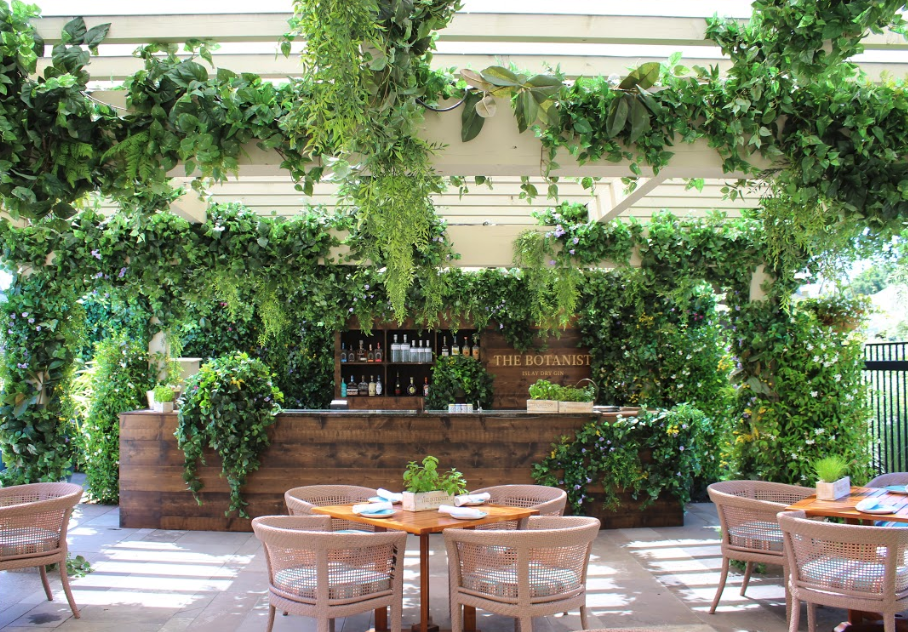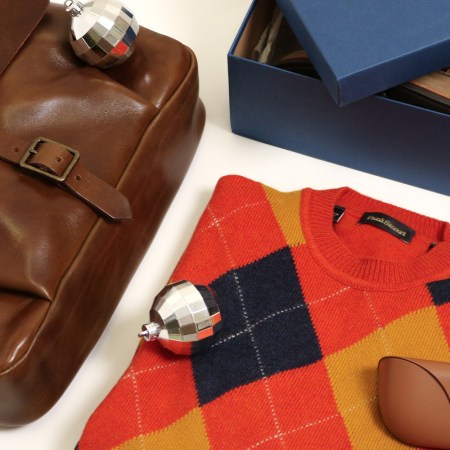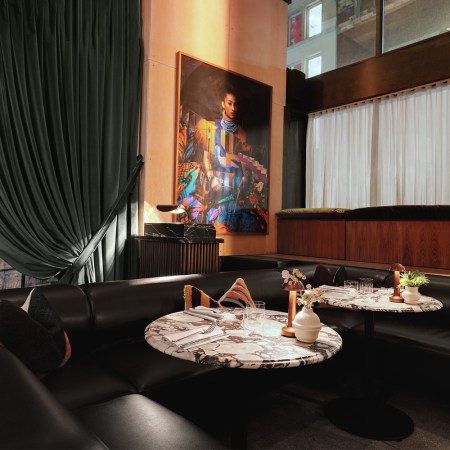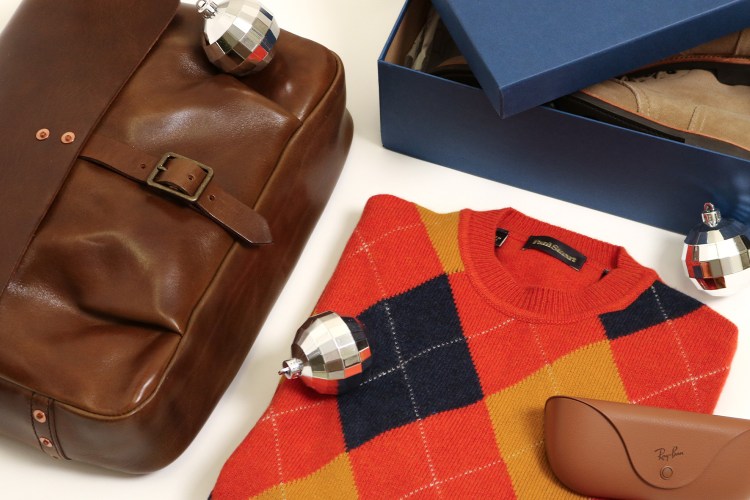It’s about eight on a midsummer Wednesday night in Chicago and Replay Lincoln Park is popping. Dimly lit and fueled by a steady stream of Jimmy Eat World, the Killers and the occasional Ramones throwback, the bar is packed with revelers clutching beers and smashing buttons on the many vintage arcade games scattered about warehouse-like space. It’s your typical college-aged party scene: High fives and tequila shots set to a backdrop of Hoop Shot and Street Fighter. But make your way past the pinball machines to the back room and suddenly you’ll find yourself, quite literally, in a pineapple under the sea.
“The only Spongebob character that isn’t a sea creature is Sandy the Squirrel. She resides in a little bubble, so that’s her bubble and that’s her inside there,” says Replay Lincoln Park owner Mark Kwiatkowski, pointing to a clear plastic tent near the entrance of his Spongebob Squarepants pop-up bar. Above it hangs an oversized cardboard cutout of a shirtless David Hasselhoff in mid-flight. “That’s from Spongebob the Movie,” Kwiatkowski continues, gesturing upwards. “I forget how it worked, but Hasselhoff saved them somehow.”
This is just the latest in Replay Lincoln Park’s long and largely successful lineup of themed installations. They’ve hosted 10 to 12 month-long pop-ups per year since Kwiatkowski first came up with the idea to transform the bar’s rear extension into Moe’s Tavern from The Simpsons back in 2017. Led by a posse of artists and bartenders (and artist-bartenders) called the Pop-up Squad, Replay’s stood-in for Buffy the Vampire Slayer, Star Wars, The Office, Paddy’s Bar from It’s Always Sunny in Philadelphia and Game of Thrones, which cost a whopping $40,000, spanned the entire space and lasted three months due to popular demand. Each theme features tailored menus, interactive props, floor-to-ceiling decor, original fan art and plenty of Instagrammable setups. The level of detail is remarkable.
“Krusty Krab is where Spongebob works,” says Kwiatkowski, referencing a hand-painted Krusty Krab sign hanging above the bar. “We partner with a restaurant next door so you can order Crabby Patties and get them delivered. It’s a little Turkish spot, ZZ’s Mediterranian, and he’s a great guy. Every time we do food for the pop-ups, I try to throw him some business.”
One recent business opportunity came in the form of a notoriously skimpy cheese sandwich. In May, Kwiatkowski made national headlines when he unveiled his most curious concept to date: a Fyre Fest-inspired pop-up, complete with FEMA tents, real sand, a $20 “Magnises Margarita,” a mannequin Billy McFarland behind bars and that now-iconic white bread sandwich.
“I remember hearing about Fyre Fest when it happened, listening to podcasts, reading articles,” Kwiatkowski explains. “Then when Netflix put out their documentary, I thought, ‘This is brilliant. Maybe it’d be a fun pop-up.’ We almost got more media attention for that than for any of the others.”
How did we get here? When did bars start abandoning jukeboxes and whiskey in favor of White Walker statues and “Gin-Ja Rule” spritzers? And what makes these bars-within-a-bar so damn popular?
“The pop culture pop-ups, those are pretty new. How I know pop-ups is bars visiting bars,” says Drink Chicago Style cocktail conference co-founder Caitlin Laman, a seasoned bartender whose resume lists headliners like Trick Dog in San Francisco and Mexico City’s Licorería Limantour. “To me, a pop-up is when staff from one bar goes into another bar and either recreates their program or throws a big party with a particular theme for a night or a month, however long.”
As Laman explains, these OG pop-ups are a kind of traveling roadshow for cocktail pros, a way for established bars to show off their skills and spread their name. When done right, it can be a powerful marketing tool in a competitive and saturated industry, but it’s not just about selling themselves. Pop-ups can also build community among bartenders and raise money for causes, as was the case when legendary London nightlife duo Iain Griffiths and Ryan Chetiyawardana of Lyaness (formerly Dandelyan Bar) popped up at Laman’s women-led, social justice-focused cocktail conference last May.
“They approached us like, ‘Hey, we want to raise money for you. Can we throw a party?’ They have a huge following so it was an easy yes,” recalls Laman. “It was cool because we don’t see a lot of men in our industry attending, let alone trying to promote, Chicago Style. The fact that these two really big names were interested, we knew it would draw a bunch of people.”
Dubbed Zombie Lyan and held at Blind Barber in Chicago’s West Loop, the one-night pop-up attracted drinks enthusiasts from all over the region. Instead of sticking to their standard fare, the Lyan team took inspiration from their host city and concocted clever one-offs like the Chicago Hot Dog ONO, a crowd-pleasing mix of whiskey, poppy seeds, tomato grenadine and celery seed soda garnished with pickles.
The beauty of this simplified pop-up concept rests in its inherently low stakes. All pop-ups can be hit or miss, but bar takeovers require less fuss and last for just a night or two, so there’s not as much on the line if they flop.
“If people come specifically for it, they’re psyched. But people who don’t are like, ‘What is this? This isn’t the bar I wanted,” she explains. “I did a pop-up at [Chicago tiki institution] Lost Lake’s side bar in October for the play-offs and when I was planning it, the Cubs had an 80 percent chance of getting in. Well, they didn’t get in, so no one came. And the few that did were like, ‘A baseball michelada? This isn’t Lost Lake. This isn’t a banana daiquiri.’ After the first two nights, I was like, ‘I have to make some tiki drinks, these people are pissed.’ So then it was basically just an extension of Lost Lake with me wearing a baseball t-shirt.”
Betting the farm on a single, precisely-defined theme is undoubtedly risky, yet according to Jean-Pierre Trevisan, hotel manager at Paris’s esteemed Hôtel de Crillon, it’s also crucial. The hotel’s latest pop-up endeavor, the Yacht Club, is a colorful Italian Riviera-style dreamscape produced in collaboration with Campari and artist Alexandre Benjamin Navet to honor the Negroni cocktail’s 100th anniversary.
“Remaining loyal to a central theme or concept is key,” notes Trevisan. “Pop-ups that incorporate too many elements can distract from their main purpose, which is providing a fun and easy escape for guests.”
For Reylon Agustin, executive chef of Madera, the onsite restaurant at Menlo Park, California’s Rosewood Sand Hill hotel, the theme not only has to be consistent, it has to be creative enough to appeal to a 21st century audience. This summer, his hotel partnered with The Botanist gin to convert their poolside lounge into a lush outdoor greenhouse teeming with blooming foliage and fragrant botanicals.
“The ones I’ve felt were a little lackluster don’t feel organic; the product feels forced like a sales pitch and the context becomes misunderstood,” says Agustin. “In a digital era where we’re exposed to so many new things in such rapid fashion, everyone is looking for something different and unique.”
Judging from Trevisan and Agustin’s successes, a visually- and thematically-sound pop-up concept can be a very savvy investment in a climate where an Instagram post can make or break a business and “Influencer” has become a bonafide profession. It’s all about cultivating an experience—and in some cases, that experience is nothing short of life-affirming.
“A pop-up can take on new meanings not possible for a bar in-and-of-itself, like be more overtly political or serve a concept for the greater good,” says Matthew Clark, a Chicago bartender and the mastermind behind one of Lost Lake’s most popular pop-ups to date: an LGBTQ Country-Western bar called the Outpost.
When Clark began designing a gay saloon inside Stranger than Paradise, the same side bar that once housed Laman’s baseball concept, he knew the concept would be hard for city dwellers to comprehend. That’s why he doubled down on making it immersive. He threw an LED rainbow in the window, crafted a wooden rope sign spelling “The Outpost” in curvy script, stocked up on big plastic horses and compiled a playlist of country crooners like Kacey Muscraves and Orville Peck. While assuredly queer-friendly, Lost Lake itself isn’t a gay bar, so Clark saw his pop-up as an opportunity to create the out-and-proud hangout Chicagoans never knew they needed.
“Part of the goal was to channel that small town gay bar vibe where all kinds of marginalized people come together to find community, acceptance and protection,” he notes. “Some people just came in to listen to Dolly Parton while they sip on a Cactus Daiquiri. Others came to feel seen as who they fundamentally are as a person.”
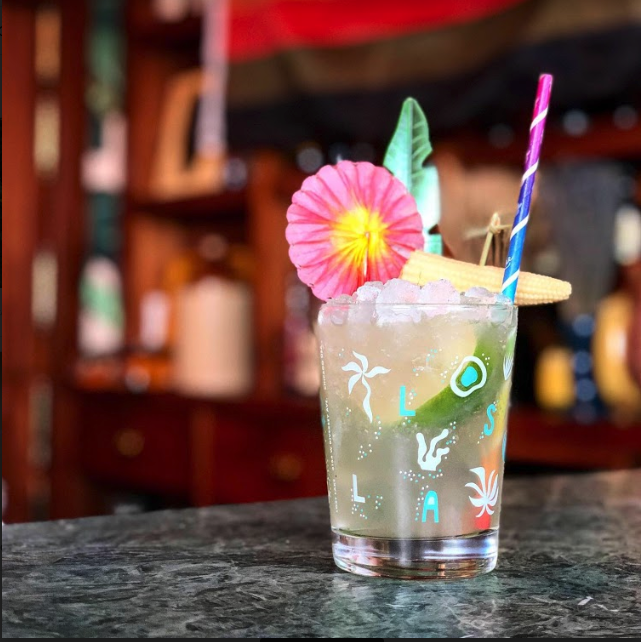
Back at Replay Lincoln Park, Spongebob madness is in full swing. Gleeful fans pose for photos with chest-high Spongebob and Patrick statues and take turns sitting in a mock canoe from Mrs. Puff’s Boating School. The room is buzzing with childlike excitement and it’s impossible not to get swept up in the fun of it, even if you can’t tell Gary the Snail from Larry the Lobster.
Maybe it seems gimmicky, but gimmicks, by definition, have no real value. Anyone who buys edible “Finger Lickin’ Good” nail polish from KFC knows full well it’ll never replace their go-to shade. A good pop-up, however, transcends kitch to become something truly special, a neatly packaged moment of shared fun, fantasy and imagination that you’re sure to miss when it’s over. At Replay Lincoln Park, Kwiatkowski mentions that many customers stop by on a weekend to check out a new pop-up, then return multiple times the next week to really take it in. And as tart and tasty as it was, something tells me that peach-hued Patrick Rockstars (Stoli Razberi, grapefruit liqueur, lemon, cranberry and a splash of Red Bull) aren’t the only reason they keep coming back.
Join America's Fastest Growing Spirits Newsletter THE SPILL. Unlock all the reviews, recipes and revelry — and get 15% off award-winning La Tierra de Acre Mezcal.
